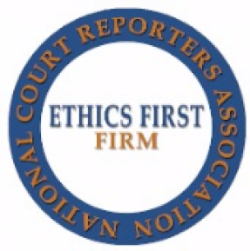Trial Presentation Creating Compelling Displays for Courtroom Success
Trial Presentation Creating Compelling Displays for Courtroom Success
Blog Article
Mesmerize the Jury: Vital Elements of a Powerful Trial Discussion
In the world of legal campaigning for, the capability to mesmerize a jury is paramount to the result of a test (trial presentation). Essential elements such as comprehending the target market, crafting a compelling story, and mastering verbal and non-verbal communication are critical parts of an efficient discussion. Moreover, the tactical usage of aesthetic aids can considerably improve comprehension and retention of crucial arguments. As these aspects intertwine, they create a cohesive method that not only notifies but also engages jurors on numerous degrees. What certain strategies can genuinely transform a typical discussion into a remarkable experience for the court?

Comprehending Your Target Market
Recognizing your audience is a critical element of effective trial discussion. A successful discussion hinges on the capability to comprehend the demographics, worths, and proneness of jurors. This understanding informs how disagreements are mounted, proof exists, and sob stories are crafted, making sure that the message resonates with the jurors on an individual level.
Study indicates that jurors come from diverse histories and may have differing degrees of understanding pertaining to legal procedures (trial presentation). Thus, it is vital to prevent lawful lingo that might estrange or confuse them. Instead, using clear, relatable language promotes engagement and comprehension. Furthermore, recognizing the jurors' possible prejudices and life experiences permits the test presenter to prepare for arguments and address issues proactively.
Reliable trial presentation likewise entails observing jurors' responses during the proceedings. Being in harmony with non-verbal cues can supply understanding right into their engagement and receptiveness, enabling for real-time modifications in strategy. Inevitably, an extensive understanding of the target market not only improves interaction but additionally constructs relationship, raising the likelihood of a favorable result. Engaging with jurors as people instead than a collective system is essential in cultivating a strong connection in the courtroom.

Crafting a Compelling Narrative
Crafting an engaging narrative is necessary in guiding jurors with the complexities of a situation. A well-structured story not just streamlines detailed legal principles however likewise engages jurors on a psychological degree, making the information extra relatable and unforgettable.
To attain this, lawyers must start by identifying the core message they desire to communicate. This message needs to resonate with the jurors' values and experiences, promoting a connection that goes beyond mere realities. The story must unravel rationally, offering occasions in a clear sequence to stay clear of complication. This sequential strategy can aid jurors adhere to the progression of occasions, stressing reason and result.
Including human elements-- such as individual stories or stories-- can better boost the narrative's influence. These aspects stimulate compassion, enabling jurors to visualize the effects of the instance on realities. Additionally, using a regular style throughout the discussion strengthens the major argument, making it less complicated for jurors to retain critical points.
Eventually, a compelling story changes a trial presentation from a simple recounting of truths into a persuasive tale that mesmerizes the court, urging them to ponder with both reason and emotion.
Using Visual Aids
Integrating aesthetic aids into a test presentation can significantly improve jurors' understanding and retention of details. Visual products such as graphes, diagrams, photographs, and videos can change intricate legal concepts and evidence right into quickly absorbable formats. By engaging several detects, these help allow jurors to visualize the situation's vital elements, making it less complicated for them to comply with along and grasp intricate details.
Additionally, properly designed visual help can emphasize important points and emphasize connections in between various items of proof. For example, timelines can effectively show the sequence of events, while annotated photos can clarify particular information appropriate to the instance. This not just help in understanding yet likewise strengthens the story provided by the attorney.
Overly intricate or chaotic visuals might bewilder jurors and click here to find out more take away from the message. Ultimately, reliable aesthetic communication can be an effective device in persuading jurors and aiding them get to educated final thoughts.
Understanding Verbal Interaction
Effective verbal communication is essential in a test discussion, as it functions as the primary methods where attorneys convey their arguments and get in touch with jurors. Understanding this ability involves quality, persuasion, and interaction. Lawyers have to articulate their factors plainly and concisely, staying clear of lawful jargon that may puzzle jurors. Simplicity in language promotes understanding and aids jurors grasp complicated problems provided throughout the trial.
Additionally, tone and pacing considerably influence exactly how messages are received. A positive tone communicates authority, while ideal pacing enables jurors to take in info without feeling bewildered. Lawyers need to also differ their vocal inflections to highlight vital factors and preserve jurors' interest throughout the presentation.
In addition, the organization of spoken disagreements is essential. Structuring the narrative rationally and coherently helps jurors follow the attorney's logic, making it less complicated for them to retain important info. Utilizing convincing techniques, such as narration, can also boost the emotional resonance of the arguments provided, thus producing a more extensive connection with jurors.
Eventually, grasping verbal communication not just strengthens a lawyer's instance yet also promotes trust fund and relationship with the jury, significantly enhancing the opportunities of a desirable decision.

Engaging With Body Movement
Nonverbal interaction plays a crucial role in trial discussions, usually communicating messages that words alone can not express. Body movement, encompassing motions, position, faces, and eye get in touch with, significantly affects how jurors view the integrity and genuineness of news the speaker. A certain position, with shoulders back and an open pose, can impart trust fund, while closed-off body language might suggest defensiveness or unpredictability.

Face expressions need to show the feelings connected with the instance, reinforcing a fantastic read the story being presented. An honest expression during a touching minute can generate compassion and reinforce the emotional allure. Eventually, grasping body language is essential for efficient test discussions, as it enhances verbal interaction and establishes an engaging existence that reverberates with the jury.
Verdict
In verdict, captivating the court requires a strategic strategy that incorporates understanding the audience, crafting an engaging narrative, utilizing visual aids, grasping verbal interaction, and involving with body language. Each element plays a critical duty in producing a powerful trial presentation that reverberates with jurors on both emotional and intellectual levels (trial presentation). By integrating these parts efficiently, lawyers can substantially enhance their capacity to persuade and influence court decision-making
Report this page